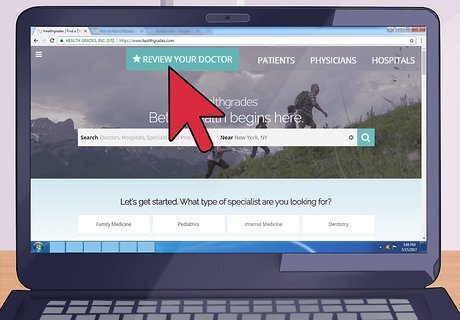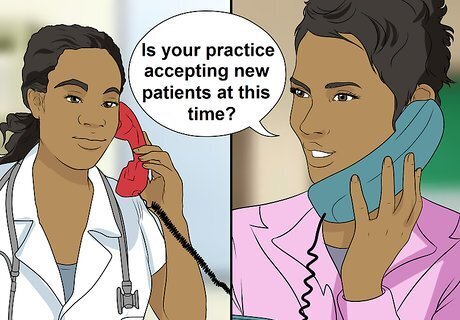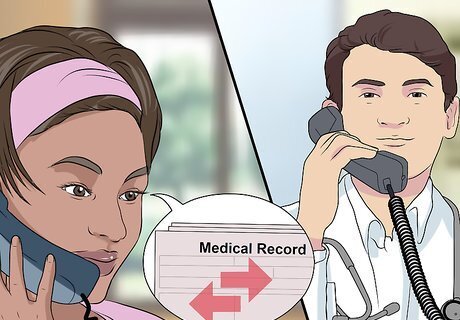
views
Looking for an In-Network Doctor

Check with your insurance. If you have insurance, whether self-provided or through an employer, your first step should be to check with your provider to see what doctors are in-network. Call and ask for a list of doctors in your area or go online and use your provider’s tool to see what doctors are available to you. In-network physicians are those who actively work with your insurance company to offer you special negotiated rates. These physicians generally charge less and cover more than out-of-network physicians. While it may take more time to get an appointment with someone in-network, your willingness to be patient will help you save money in the long run. Often, when seeing an in-network primary care physician, you will only have to pay a copay, typically between $20 and $40, for a general visit. Check your plan details to see how much your copay for each visit will be.

Confirm with the doctor. Doctor’s offices tend to have dynamic relationships with insurance companies, so it is beneficial to call their office and confirm your coverage. Give the office or clinic a call, and ask to speak with a billing specialist about accepted insurance. Ask the clinic, “Do you accept this plan?” and “Are you in or out of network?” Many doctors go out of network and/or the insurance website is not updated. Be sure to give them not only your insurance provider but your specific plan, as they may accept some but not all plans from your provider. Plan details can be found online, on your insurance card, or by calling your insurance provider.

Ask for recommendations. If you get your insurance through a school or employer, chances are that many of the people around you will have the same coverage. Ask friends or coworkers that you trust for recommendations for a good primary care physician in your network. Let your friend or coworker know, “I’m looking for a new doctor that is covered by our insurance plan. Do you have a primary care doctor that you like?” Also, ask them what they like about the doctor, how long the wait time usually is, and whether or not making appointments is easy.

Go out of network. If you have a reason for going to a doctor out of network, such as needing to see a specialist or traveling outside of your network area, contact your insurance company and ask them about doctors in the area. There may be out of network professionals that still take your insurance so you aren't left with the total bill. Let your insurance company know about your reason for going out of network. There may be additional details in your policy that could help defray some of your expenses. If possible, get a primary care doctor who is in-network and a specialist who is out of network. Your primary care doctor can then do a lot of the essential testing to cut down on costs for you.
Finding the Right Doctor for You

Determine specialties. Typically, a general practitioner serves as a primary care physician, but internal medicine doctors are also often able to provide primary care. If you require a certain type of special care for a particular disease or part of your body, check with local medical groups and hospitals to see if there is an internist there with whom you can work. Internists typically specialize in a particular part of the body, such as the heart or kidneys, or in treating a certain type of medical complication, such as diabetes care. Internists are not surgeons. Instead, they work on the diagnosis and treatment of medical conditions and complications through standard medical practices. Internists are often great choices for more complex conditions, such as chronic fatigue syndrome. Ask what different internists specialize in or take an interest in, and go with one that sub-specializes in something related to your specific condition. Pediatricians are specialists who work with children. If you are looking for a primary care physician for a child under the age of 14-16, finding a pediatrician is essential.

Check reviews. Reviews and client testimonials are a helpful tool to gauge a doctor’s bedside manner. Look online at review sites as well as specialty sites like ZocDoc and Angie’s List to see what others have to say about their experience with a physician. AngiesList.com provides reviews that factor in things like treatment effectiveness, punctuality, and friendliness. It’s important to find out whether or not the doctor listened to the patient. Look for comments specifically about the type of care someone received. Keep in mind that people are more likely to review what they consider to be negative experiences. Take comments like, “they kept me waiting past my appointment time,” lightly and instead look for indicators of malpractice or poor treatment of patients. If you know anyone who has been to a physician personally, ask them about their experience. Let them know, “I’m thinking about seeing a new primary care physician. What has your experience been like with this doctor?”

Do some background research. Once you’ve found a couple of doctors you think you may want to work with, take a look into their backgrounds to help you pick the best doctor. Take a look at factors like where they went to medical school, how long they have been practicing, how close they are to your home or office, and whether they have extended or weekend hours. Most of this type of background information can be found by checking online on the hospital or clinic’s website, or by calling the doctor’s office directly. Healthgrades.com provides information on education, affiliated hospitals, malpractice claims and boards actions, office locations, and insurance plans. Consider whether or not you’re more comfortable with a doctor of a certain age or gender. If so, look into the ages and genders of potential doctors that you’re considering. If English is not your first language, check to see if the doctor speaks any other languages. Working with a doctor in your first language can help make things more comfortable and easy for you as a patient.
Go with a doctor that works in a large hospital or office. Large facilities have more doctors and more services. If you come in with a condition and your doctor is not sure what you have, they can ask for an instant second opinion. See if the hospital or office your potential doctor works at has an onsite lab, an onsite pharmacy, and an x-ray department. The more tests you can have done there, the more money you’ll save and the more efficient your doctor’s visits will be.
Getting Started as a New Patient

Call to see if the doctor is accepting new patients. Before you can set an appointment, you need to make sure your intended physician is accepting new patients. Call their office and ask, “Is your practice accepting new patients at this time?” If the doctor is not accepting new patients at this moment, you may be able to ask their office for recommendations for similar physicians in the area.

Transfer your medical records. Call your previous doctor’s office and ask them to transfer your medical records to your new doctor. You may be able to request the records be sent directly to you through a patient portal, or you may have to ask your previous doctor’s office to send them directly to your new physician. Be sure to request that your previous physician include lab results and records for any recent MRIs, x-rays, and hospital visits. Under the Health Insurance Portability and Accountability Act, your doctor must comply with a request to provide you with copies of your medical records. If your doctor will not forward your records to your new physician, go to their office and request your records directly. You will need to sign a release of information document in order for this to happen.

Schedule your first appointment. Once you have chosen a new primary care physician, schedule an appointment for a general visit. This will give you the chance to get to know your new doctor, and it will help your doctor become familiar with your medical records and expectations. Ask for a new patient appointment so that your new doctor has time to review your medical history. These appointments are usually 30 minutes long, which is twice the typical amount of time. If you have any specific questions regarding the doctor’s practice or your care options, have them ready to ask during the appointment. Let your doctor know about any recent or ongoing conditions for which you have been treated, as well as any medications that you are currently taking. You will be forming an important relationship with your new doctor’s nurse, as you’ll likely be communicating a lot with them and leaving messages more them. Be sure to meet the nurse and ask what the usual turn around time is on returning calls. After the appointment, check-in with yourself and evaluate how you feel. Do not continue seeing a doctor if they made you feel uncomfortable or unwelcome in their practice.
















Comments
0 comment